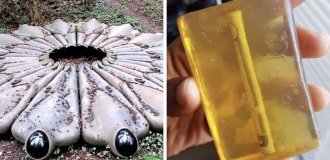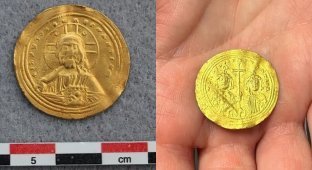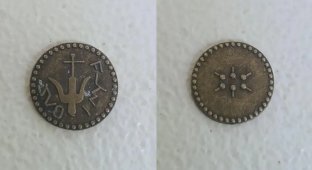The oldest gold coin from Saxony was discovered in Leipzig (3 photos)
A small but astonishing discovery has rewritten the history of Saxon numismatics. Treasure hunter Daniel Fest found a coin in a field near Leipzig-Gundorf that turned out to be the oldest known from the region. It is a Celtic gold quarter-stater, 2,200 years old. Weighing just two grams, the find was officially unveiled this week by the State Archaeological Office in Dresden. 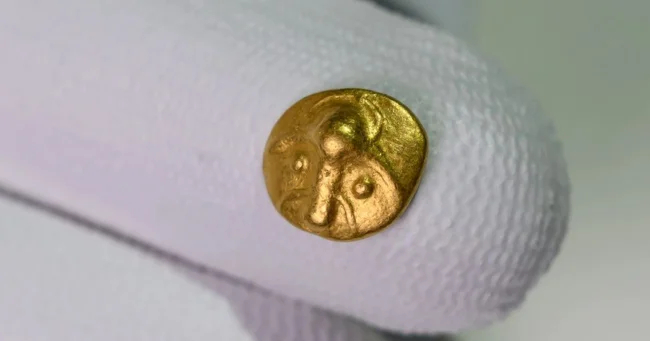
The tiny gold coin was minted in the 3rd century BC. Archaeologists believe it is a quarter stater, a Celtic coin used in Central Europe.
The obverse depicts the head of an animal—likely a stag. It has large eyes, distinctive antlers, and a rounded forehead. The reverse features an open torc with thickened ends, a star with rounded edges, and a central sphere. These motifs are characteristic of Celtic communities in northern Bohemia.
According to archaeologist Regina Smolnik, such coins are extremely rare east of the traditional Celtic world: "Saxony was located outside the Celtic territories, but this find testifies to constant connections and exchanges between them. The coin was not in common circulation; it was more of a status symbol or store of value, belonging to local elites who actively traded with the Celts." 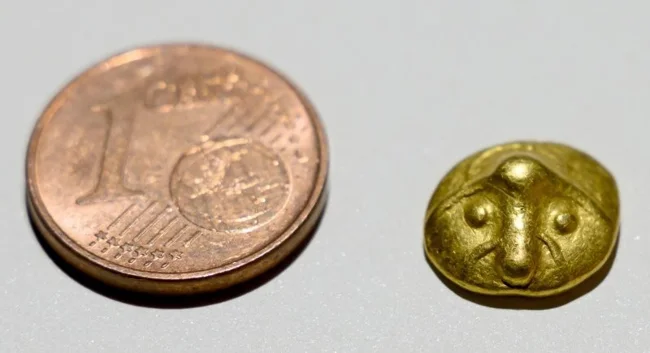
Fest, who goes treasure hunting up to fifteen times a year, called the moment unforgettable: "This isn't my oldest find, but it's certainly the most beautiful."
The discovery was immediately reported to the authorities.
Barbara Klepsch, Saxony's Minister of Culture and Tourism, noted: "This gold coin is a tangible fragment of the past, testifying to ancient trade and the people who lived here. It also demonstrates how citizens help to reveal and preserve our cultural identity." 
Due to its convex shape, the coin belongs to the Celtic gold items known as "Regenbogenschüsselchen"—"rainbow cups." The name comes from an ancient belief that treasure was hidden where a rainbow touches the ground. Farmers often found these cup-shaped coins in their fields after rain, reinforcing the myth that they had fallen from the sky.
Before this discovery, the oldest known Saxon coin was considered a silver büchelkinar. It was found in 2007 near Zauschwitz. The artifact dates back to the early first century BC.
The gold piece weighs only two grams, but its cultural contribution is enormous. To date, only eleven Celtic coins from Saxony are known. The artifact will be exhibited in the Dresden Museum, which will not only expand knowledge but also strengthen collaboration between residents and scholars in protecting cultural heritage.




